280 days of Urbpandemonium #97
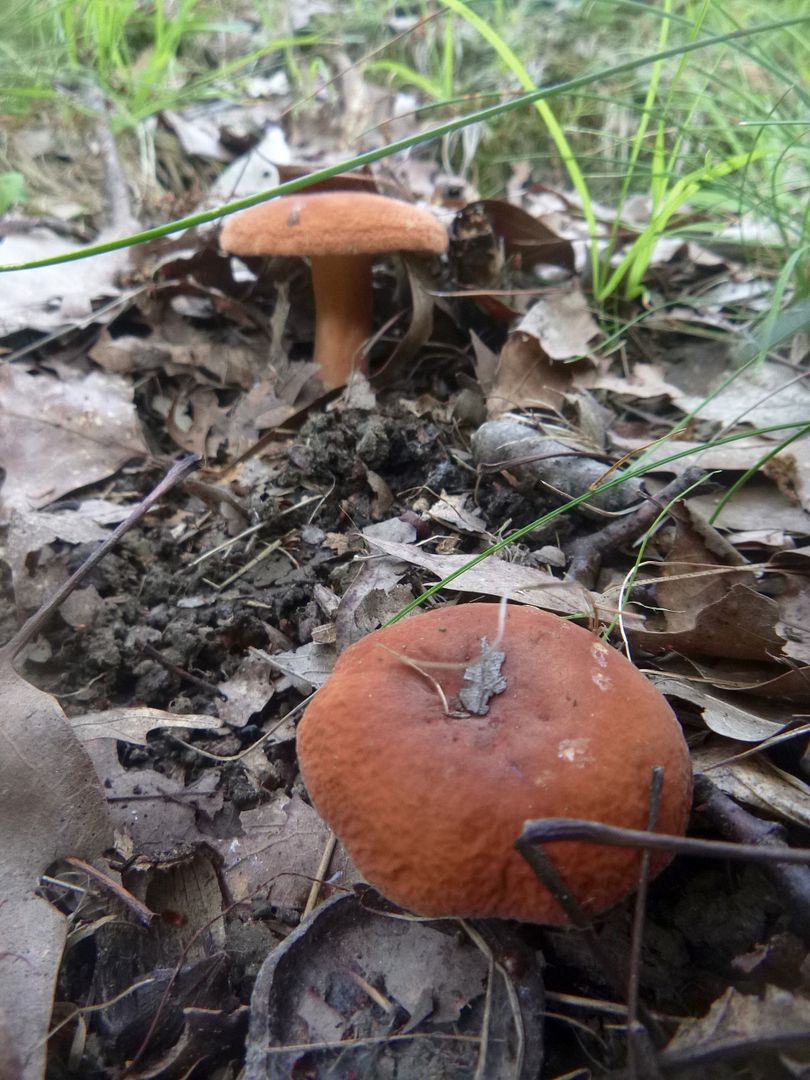
There are many hours of daylight this time of year. The trees use those hours to turn the sunshine into sugar--these are the peak production weeks. Down in the roots there is fungal mycelium bonded to the tree's tissues. The fungus helps bring water to the roots, protects them from enemy fungi and bacteria, and uses enzymes to unlock nitrogen from the soil for the tree to use. In return, the threads of fungi drink some of the sugar from the roots, getting the energy they need to do their jobs, and when there is abundant food, to reproduce.
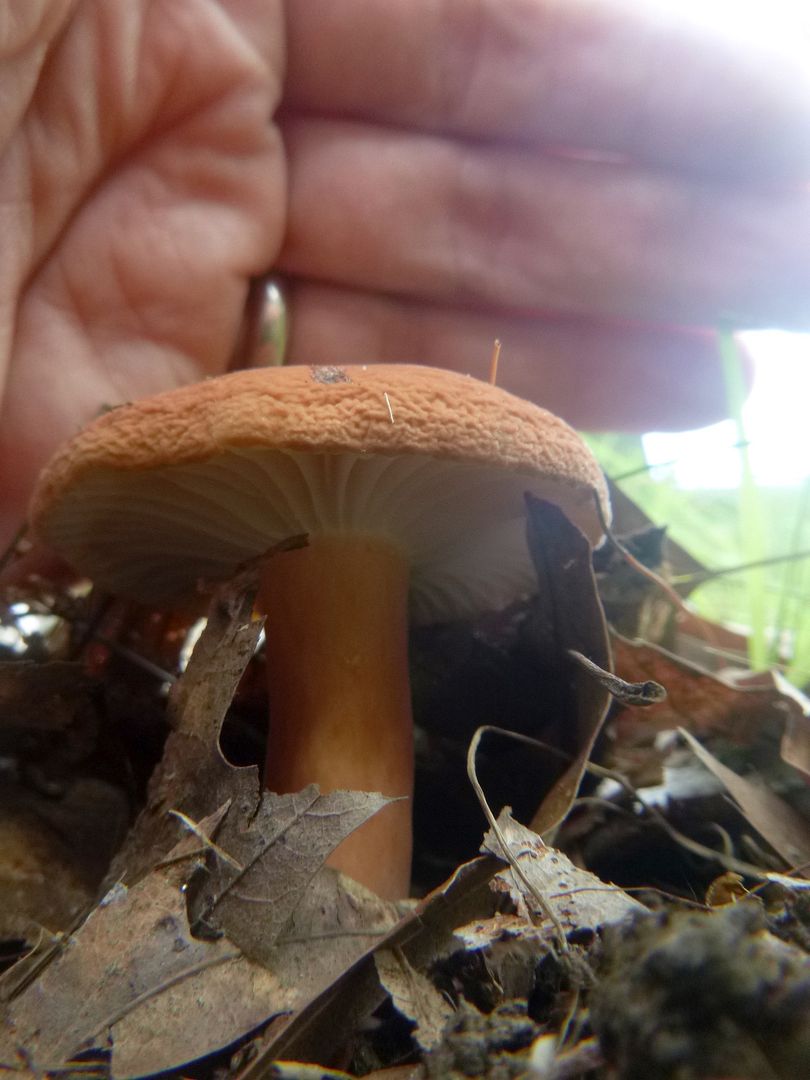
The fungus uses the sugar to craft mushrooms, umbrella-shaped fruits that bear spores under their domed caps. The caps protect the delicate spore-producing cells from drying in the sun, or washing away in the rain. The spores may germinate close by, increasing the amount of the parent species in the soil, or may catch a breeze and drift great distances.
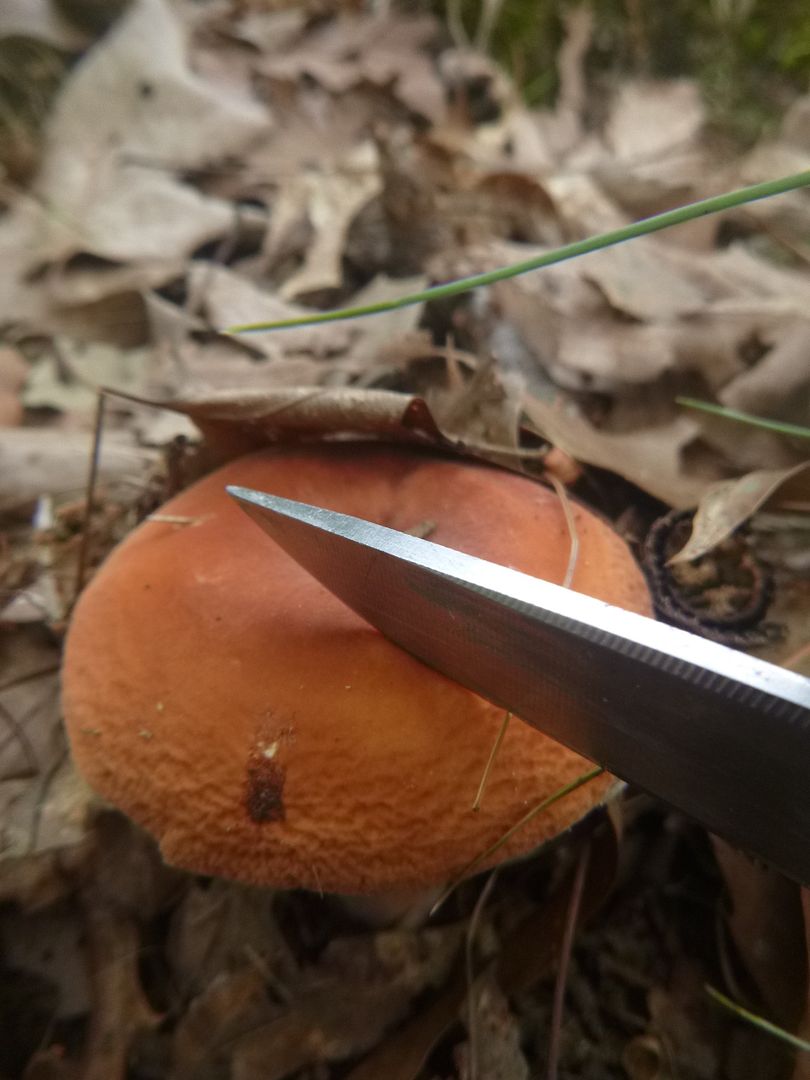
The fungus that produced this mushroom is a relative of the Russulas mentioned in some earlier posts. These however have a fine velvety texture, and a blush of color on the stem. And when damaged by a millipede's bite or a naturalist's knife...
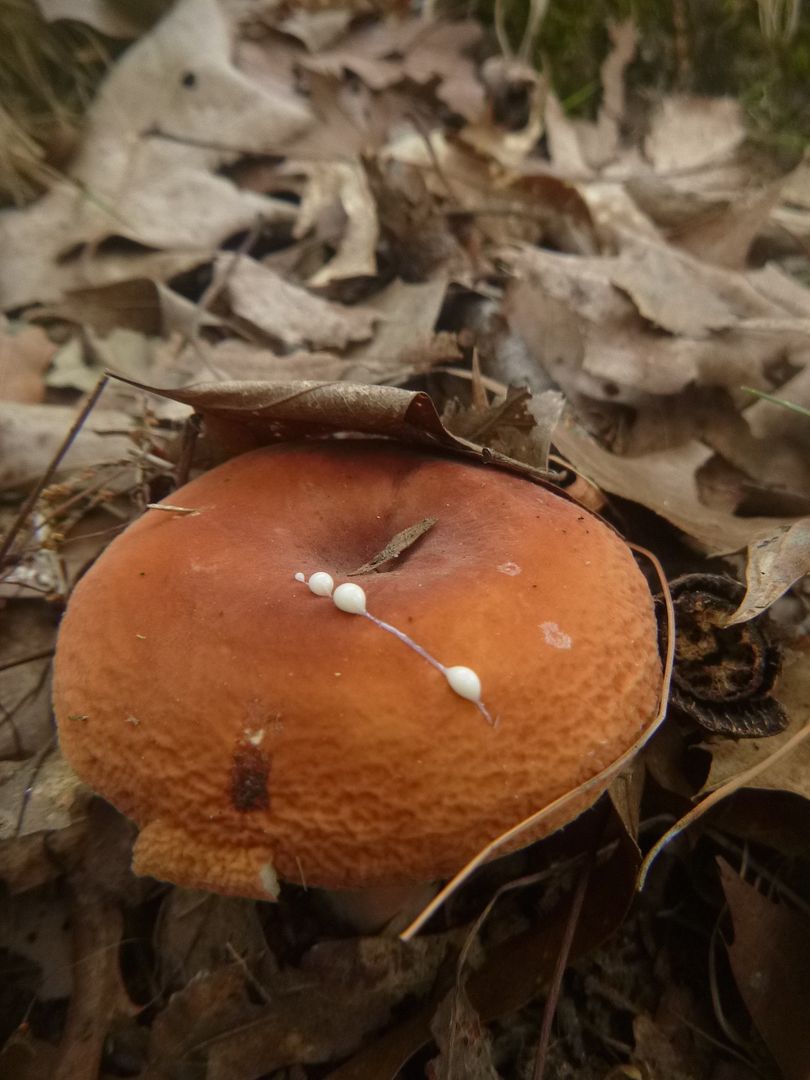
...white latex is produced, probably providing a deterrent to the millipede, and confirming an identification for the naturalist. These used to all be classified as Lactarius* but some have been given a new genus Lactifluus** including the species pictured here Lactifluus hygrophoroides***
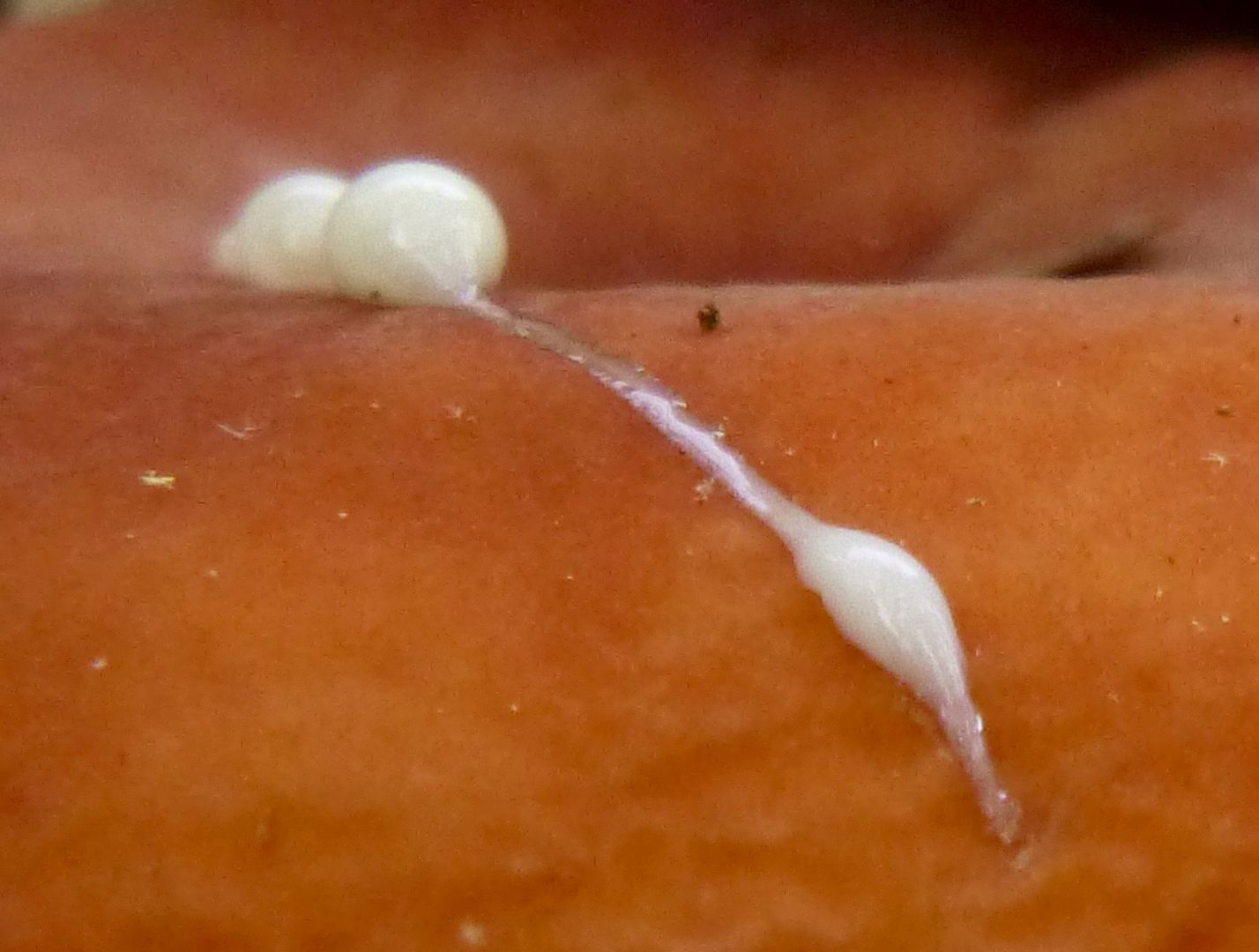
* "The one that produces milk"
** "The one from which milk flows"
*** "The one from which milk flows, that looks like a water-bearer"